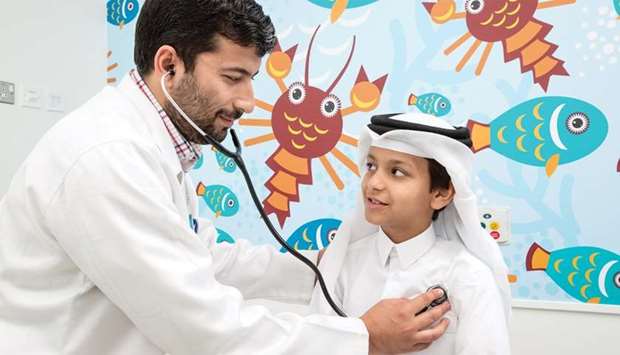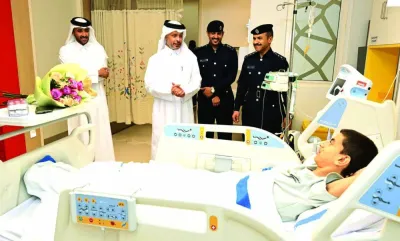Hamad Medical Corporation (HMC)'s Paediatric Emergency Centers (PECs) have introduced a 'unique clinic' to care for patients who are stable enough to be discharged from hospital but still require intravenous (IV) medication.
Previously, these patients would have been required to stay in the hospital, but the Early Emergency Discharge Clinic (EEDC) allows them to be discharged sooner. The clinic is benefiting both the PEC and patients by decreasing the length of stay and admissions to the hospital, while allowing patients to safely return home more quickly, HMC has said in a statement.
“We first introduced the EEDC, previously known as the Antibiotic Clinic, in 2011 at the Al Rayyan PEC to free up beds for more critical cases. The clinic was relocated to the Al Sadd PEC in 2016,” explained Gloria Arrojo, director of nursing, PECs.
Since its opening, a total of 6,729 patients have been received at the EEDC. Before a child is referred to the EEDC, they must meet certain criteria, including having been born full term or near term, have no history of neonatal intensive care unit admission, have stayed a minimum of 12 hours at the PEC’s observation room, and completed two doses of penicillin.
“Other criteria for transferring newborns from the observation room to the EEDC include the patient being clinically stable and their laboratory investigation reports being within the normal range. The patient’s family must comply with the discharge plan and return to the clinic either once or twice a day to receive the IV treatments. They must also take the child’s temperature every four hours and document those readings,” she noted.
Arrojo explained that once a patient meets the criteria for the EEDC, their parent or caregiver is provided with instructions, which include health education about their condition and the importance of strict compliance with the treatment regime. They are also provided with instructions on how to care for the child’s intravenous cannula (a small plastic tube inserted into a peripheral vein to administer fluids, medication and nutrition).
Before a patient is referred to the EEDC, parents must demonstrate that they fully understand the discharge instructions and their responsibilities. Arrojo said, “We don’t just discharge our patients and ask them to come to the EEDC. We ensure that their caregivers fully understand that the child is in need of intravenous medication. They sign a consent form that is their commitment to bringing the child on time for his or her antibiotic dose and to complying with the discharge instructions.”
Dr Khalid al-Ansari, medical director of Paediatric Emergency Services, said the clinic was created with the aim of safely increasing the availability of beds for sicker patients while maintaining a high standard of care and patient satisfaction.
“This unique idea was introduced to decongest our observation rooms, make beds available for more critical cases, decrease the length of stay, and deliver safe, quality care in a more efficient manner. It has improved our existing services, decreased the escalating patient to staff ratio, improved overall patient satisfaction and allowed us to accommodate more patients – which is a priority due to the country’s increasing population. The introduction of the EEDC has also allowed us to spend more quality time with our sickest patients,” he said.
There are currently over 80 observation room spaces across the five PECs, which are located in Al Sadd, Old Airport, Al Rayyan, Al Dayeen and Al Shamal. A team of more than 120 doctors and 410 nurses work around the clock across the five PECs.



